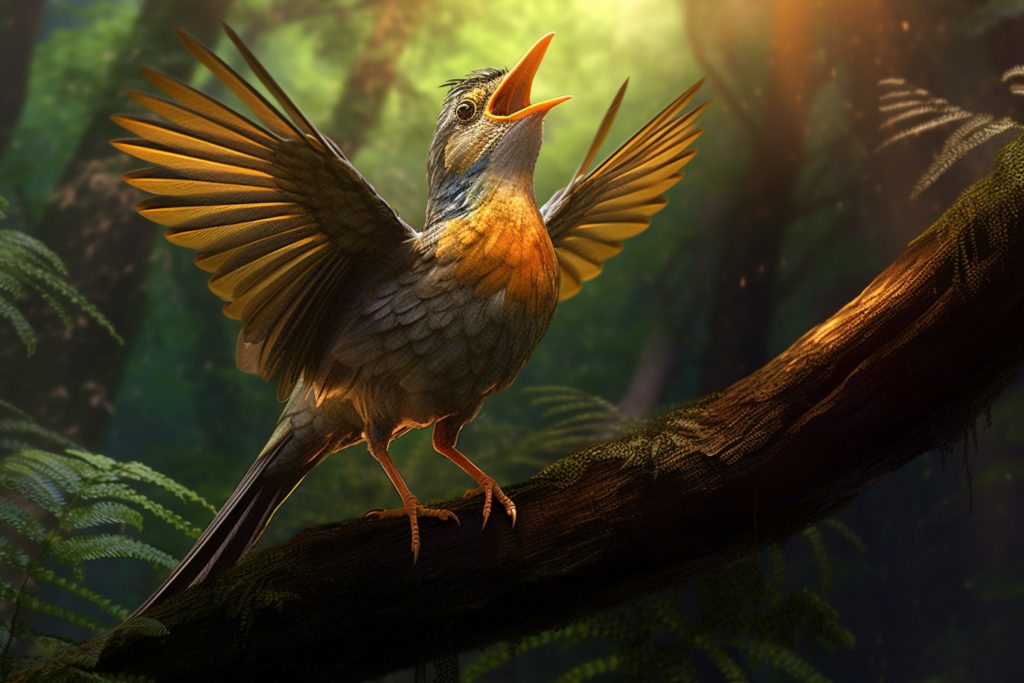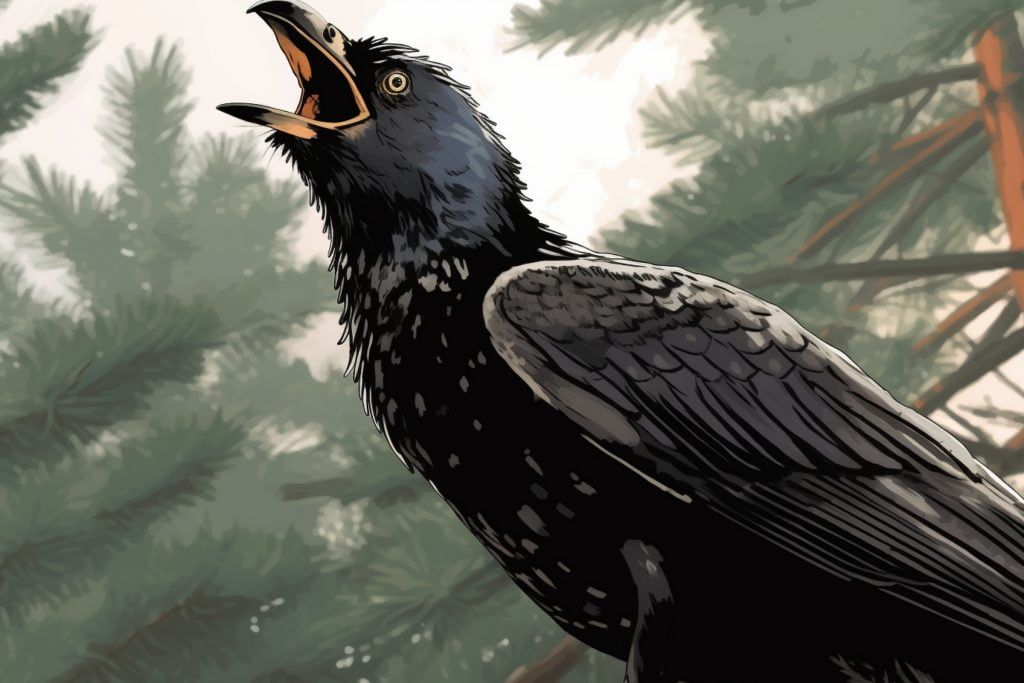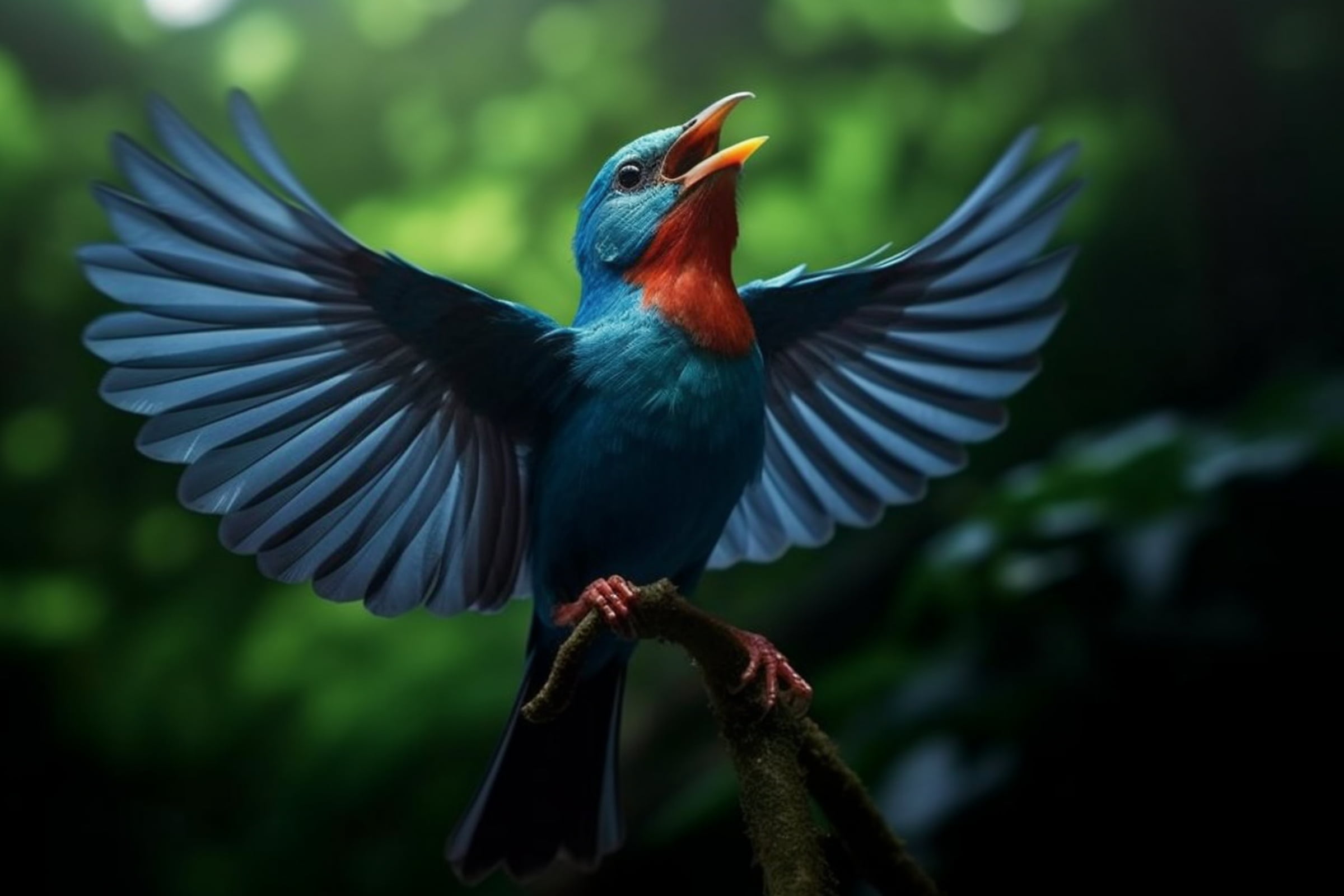Have you ever wondered why birds of the same species sing in a similar manner? It’s all down to their genetics, upbringing, and the concept of shared ‘culture’.
Like humans, birds, too, have a ‘language’ within their species, learned and passed down from one generation to the next. Their songs carry specific information and function to communicate effectively, helping to identify mates, mark territories, and warn others of potential threats.
In this blog post, we will delve into the world of avian communication, exploring the intriguing concepts behind bird song uniformity. You will gain insights into the unique facets of bird behaviour and the evolutionary significance behind their tuneful melodies.
- Birds: The Melodious Maestros
- The Linguistics of Avian Song
- The Role of Bird Songs in Survival and Reproduction
- Final Thoughts
- FAQs – Why Do Birds Of The Same Species Sing The Same Way?
- Q: Why do birds sing the same songs within a species?
- Q: When do individual birds typically sing more complex songs?
- Q: What can you tell me about the song of the white-crowned sparrow?
- Q: Do all song sparrows sing identical songs?
- Q: How do birds use warning calls?
- Q: Can you elaborate on the variety of sounds produced by the Brown Thrasher?
- Q: What role does the female bird play in bird song?
- Q: How does convergent evolution influence the evolution of bird songs?
- Q: Could you explain the term 'song crystallization'?
- Q: How does territorial song function in bird behaviour?
- Q: What is an atypical song in the context of bird vocalization?
- Q: How do bird songs reflect sexual dimorphism?
- Q: How do Eastern African birds, like the eastern double-collared sunbird, use song?
- Q: How does auditory feedback influence bird songs?
- Q: How does the study of bird songs contribute to the field of Biological Sciences?
- Q: How does the concept of 'sky islands' impact the song differences within a bird species?
- Q: How do hummingbirds use their songs?

Birds: The Melodious Maestros
Birds are nature’s symphony, filling our environment with distinct melodies. There is an intriguing science behind why they of a particular species share the same songbook. They don’t just chirp randomly; there’s an array of purposes and patterns to their vocalisations.
- The Genetic Component: Every bird species has a unique set of genetic instructions. This programming directs their physical characteristics and behaviours and also influences their song patterns. Birds of the same species, having similar genetic blueprints, inherently produce analogous sounds.
- Learning and Upbringing: Just like how human children learn a language, birds too learn their ‘songs’ from adult ‘tutors’. Nestlings and fledglings spend hours each day listening to adults, fine-tuning their voices to replicate those songs. It’s this learning process that ensures the continuity of the same songs within a species.
The Linguistics of Avian Song
Understanding bird songs is similar to deciphering an encrypted language. Each species, with its shared repertoire, forms a unique linguistic community.
- Shared Culture: Birds of the same species share a ‘cultural tradition’ of songs. Each species has a song or a set of songs unique to them. This culture ensures their communication remains effective and consistent within the group.
- Dialects: Surprisingly, bird songs also have ‘dialects’. Different populations of the same species, separated by geographical barriers, may sing slightly different versions of their species-specific song. These song variations work similarly to human regional accents, adding a layer of complexity to bird communication.

The Role of Bird Songs in Survival and Reproduction
Bird songs play a significant role in their survival, reproduction, and overall fitness. Their seemingly simple tunes carry profound evolutionary implications.
Mate Attraction
In the arena of courtship, it is essential for birds within a species to understand each other’s songs, for it is the common musical language that allows them to connect effectively with possible mates.
Females are drawn to males who can skilfully perform their species-specific melodies, as this musical proficiency signals a strong genetic profile and a high likelihood of survival.
Typically, it is the male birds who put on these vocal performances, serenading potential mates with their melodious tunes.
A song that is strong and intricate is a sign of a male who is in good health and superior in genetics, making him a highly sought-after mate.
Territory Defence
For birds of a single species, upholding and safeguarding their territories is a fundamental part of their behaviour that significantly influences their shared song patterns.
Having a consistent melody across the species allows them to effectively stake their claim, establish dominance and confront any potential rivals, be they of the same or different species.
This unified song forms an integral part of intraspecific competition, where males employ their distinct tunes as tools of competition and intimidation against their peers. In essence, these songs serve as an auditory boundary line, clearly demarcating an individual’s territory.
They send out an unmistakable message of ownership and a warning to potential intruders, signifying control over the resources within that particular area.
Cultural Transmission
Culture plays a prominent role in shaping the songs of birds of the same species. Cultural transmission refers to the process of learning and maintaining a collection of shared behaviours, vocalisations, and traditions within a community of birds.
Just as human languages are passed down through generations via exposure and mimicry, so are bird songs. They are shared within bird communities, where older generations teach the youngsters, who, in turn, pass them on to their offspring.
This ensures that the birds of the same species remain on the same wavelength when it comes to their singing skills.
Predator Warnings
On occasion, birds use specially designed alarm calls to alert their kin about impending dangers, such as the looming presence of predators. Within a particular species, these alarm calls maintain a remarkable consistency, as though from a universally understood script.
This shared language of danger allows the members of the species to quickly grasp the severity of the threat and respond promptly.
To delve deeper, this system of alert signals is a fundamental element of a bird species’ survival strategy. When a bird detects a predator nearby, it emits an alarm call, a unique song carrying a specific message of imminent danger.
The interesting aspect is, the type of predator often dictates the nature of this alarm. For example, different tunes might be issued for airborne predators like hawks compared to ground-based threats such as cats.
Other members of the species, upon hearing this alarm call, immediately understand the nature of the threat and react accordingly.
They might take cover if the danger is too close, or they might join in the chorus of alarm calls, amplifying the warning signal’s reach across the territory. This uniformity in response is only possible due to the consistent alarm calls within the species.
In essence, these predator warning systems offer fascinating insights into the advanced social structures and survival tactics within bird species.
The ability to convey danger, understand the threat, and coordinate a community-wide response demonstrates the complexity of avian communication and its crucial role in their survival.

Final Thoughts
So, there you have it, the sweet melody you hear at dawn is more than just birds greeting a new day. It’s a sophisticated language, a melody refined through generations, rich with messages of love, conflict, and survival.
It’s fascinating to realise that the songs we wake up to every morning are not just ambient sounds. They are intricate conversations, shared stories of a species, declarations of dominance, or serenades for a loved one.
The shared songs of a species form the soundtrack to their existence, shaped by evolution, learning, and adaptation.
As we learn more about these vocalisations, we also deepen our understanding and appreciation of the interconnectedness of all life on Earth.
So, as you step outside on your next early morning walk, why not pause for a moment? Listen to the birdsong around you. Can you hear the symphony of life playing out in the treetops?
Isn’t it incredible to consider the complex language that’s being spoken in those melodies? As you marvel at this, ponder upon this – if we were to understand the languages of all creatures around us, how would it transform our relationship with nature?


FAQs – Why Do Birds Of The Same Species Sing The Same Way?
Q: Why do birds sing the same songs within a species?
A: Birds of the same species sing similar songs due to a combination of genetic basis and vocal learning. This uniformity in song helps with effective communication within the species, be it for mate attraction or territorial defence.
Q: When do individual birds typically sing more complex songs?
A: Individual birds often produce more complex songs during the breeding season, using these intricate melodies to attract mates and deter rivals from their breeding territory.
Q: What can you tell me about the song of the white-crowned sparrow?
A: The song of the white-crowned sparrow is an excellent example of vocal learning and song crystallization in birds. Juveniles learn their songs from adult ‘tutors’, refining and solidifying, or ‘crystallizing’ these songs into a consistent adult version.
Q: Do all song sparrows sing identical songs?
A: While song sparrows share a common pool of song types within a species, individual birds can have slight variations or ‘dialects’. These song differences are often influenced by geographical location and the specific ‘tutor’ bird from which they learned their songs.
Q: How do birds use warning calls?
A: Birds use warning calls to alert their kin about potential threats like predators. These sounds are consistent within a species, enabling rapid response to potential threats. It’s an example of complex vocalization used for survival.
Q: Can you elaborate on the variety of sounds produced by the Brown Thrasher?
A: The Brown Thrasher is renowned for its vast repertoire, with the ability to produce a wide variety of sounds. Its song is a series of repeated phrases, and it’s known for its remarkable vocal mimicry, mimicking the songs of other bird species.
Q: What role does the female bird play in bird song?
A: In many species, it’s predominantly the male birds that sing, especially the more complex and elaborate songs. These songs are often performed to attract female birds during the breeding season. However, female birds do sing in some species, contributing to the variety of notes in the avian world.
Q: How does convergent evolution influence the evolution of bird songs?
A: Convergent evolution can lead to similar song patterns in different bird species that share the same ecological niche. This happens when different species face similar environmental pressures, leading to analogous adaptations, including in their songs.
Q: Could you explain the term ‘song crystallization’?
A: Song crystallization refers to the process by which young birds refine and perfect their songs. After a sensitive period of listening to adult ‘tutor’ songs, they practice and gradually ‘crystallize’ their song into a consistent and stereotyped pattern typical of their species.
Q: How does territorial song function in bird behaviour?
A: Territorial songs play a crucial role in bird behaviour. Birds use these songs to claim and defend their territories, especially during the breeding season. The songs serve as an auditory fence, warning off intruders and signifying ownership of the area and its resources.
Q: What is an atypical song in the context of bird vocalization?
A: An atypical song refers to a song that diverges significantly from the usual or typical songs of a species. These atypical songs could be due to variations in learning, genetic factors, or adaptations to specific environmental conditions.
Q: How do bird songs reflect sexual dimorphism?
A: In many bird species, only the males sing, especially the more complex and elaborate songs, displaying sexual dimorphism in vocal behaviour. Often, males with more complex songs and colourful plumage are more attractive to females, while females may exhibit dull plumage and sing less frequently or not at all.
Q: How do Eastern African birds, like the eastern double-collared sunbird, use song?
A: Eastern African birds, such as the eastern double-collared sunbird, use song in several ways, such as to establish and defend territories, attract mates, and warn against predators. The specific patterns and functions of their song can provide insights into their behaviour, ecological niche, and the pressures that have shaped their evolution.
Q: How does auditory feedback influence bird songs?
A: Auditory feedback plays a crucial role in the learning and maintenance of bird songs. Birds listen to their own songs and the songs of others, using this feedback to refine and adjust their singing. This process is particularly crucial during the learning phase in young birds.
Q: How does the study of bird songs contribute to the field of Biological Sciences?
A: The study of bird songs offers rich insights into areas such as evolution, ecology, neurobiology, and behaviour. Understanding the genetic basis of song, the control of vocalization, and how songs contribute to survival and reproduction can inform broader questions in Biological Sciences. It’s a compelling subject for any curious observer and continues to offer new avenues for research.
Q: How does the concept of ‘sky islands’ impact the song differences within a bird species?
A: ‘Sky islands’ are isolated high-altitude habitats surrounded by dramatically different lowland environments. These isolation areas can lead to significant song differences within a bird species due to limited gene flow and distinct selection pressures. Over time, birds on different ‘sky islands’ may develop unique dialects, contributing to the rich tapestry of avian songs.
Q: How do hummingbirds use their songs?
A: Despite their small size, hummingbirds have a surprisingly complex vocal repertoire. Males often sing intricate songs to attract females and defend their territories. The nature and complexity of these songs can vary widely among different hummingbird species, reflecting their diverse environments and life strategies.
References:
- About Bird Vocalization (Wikipedia).
